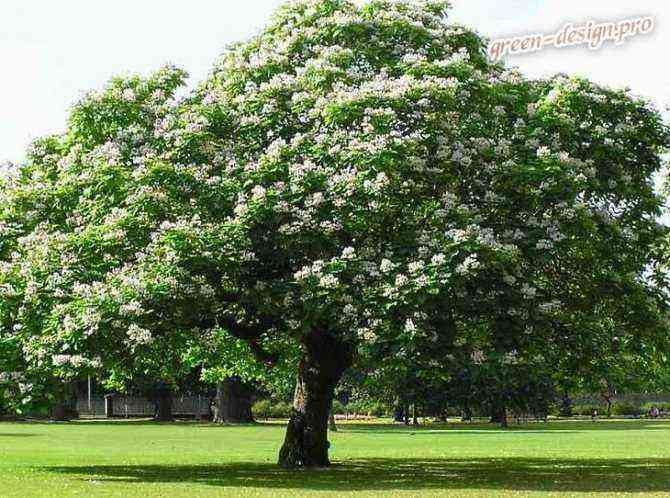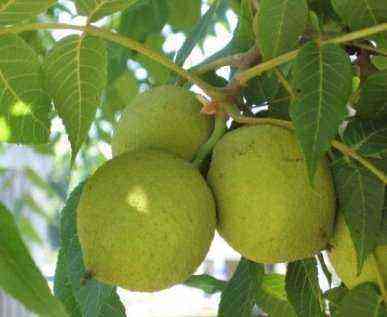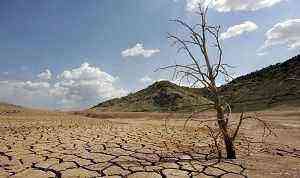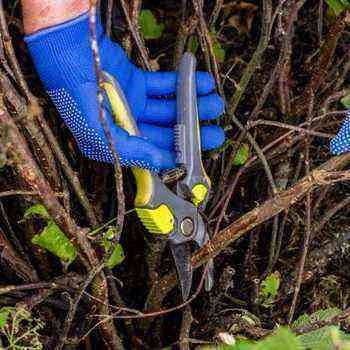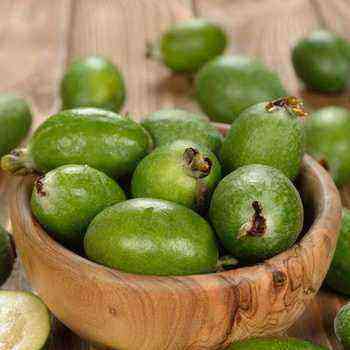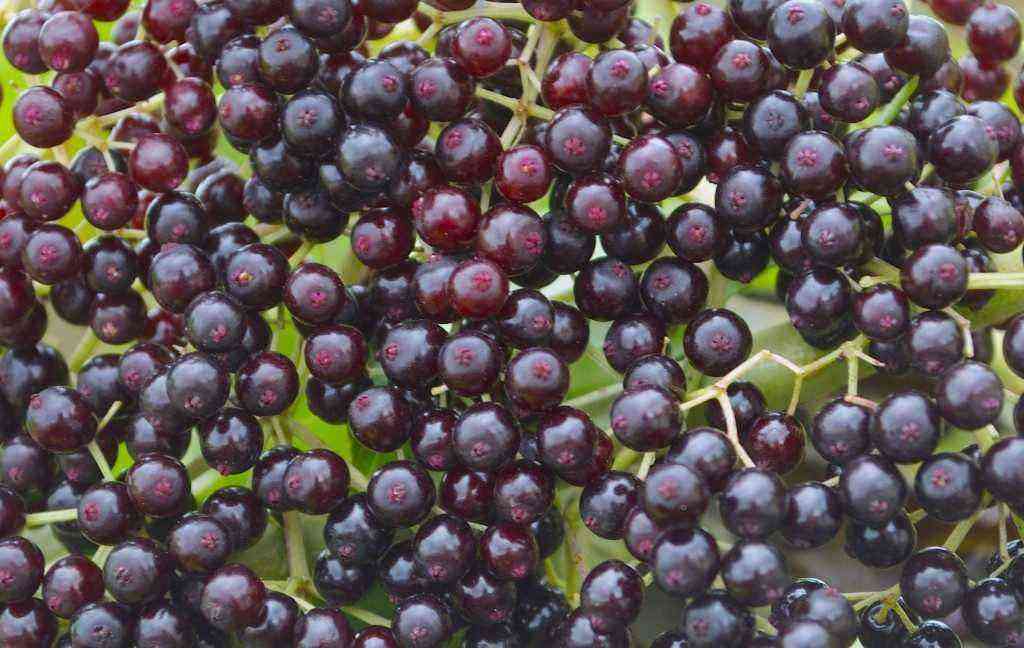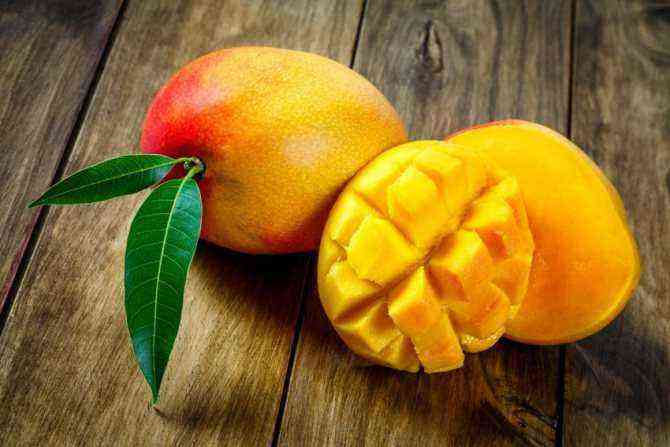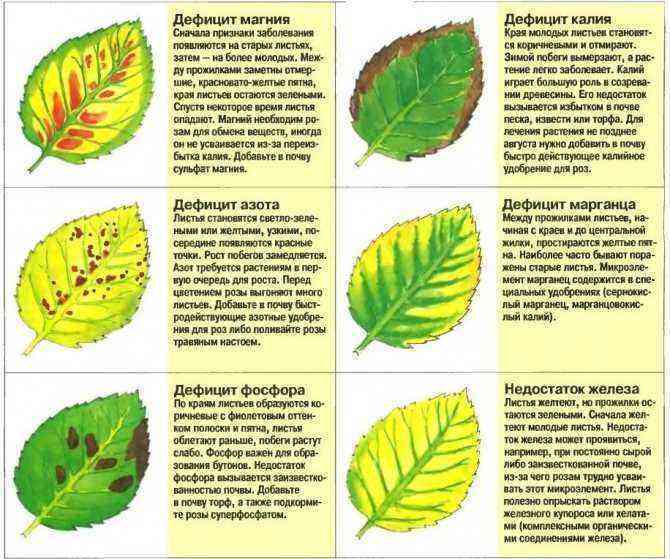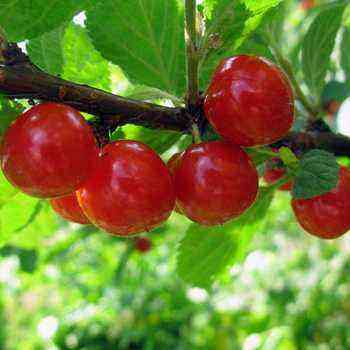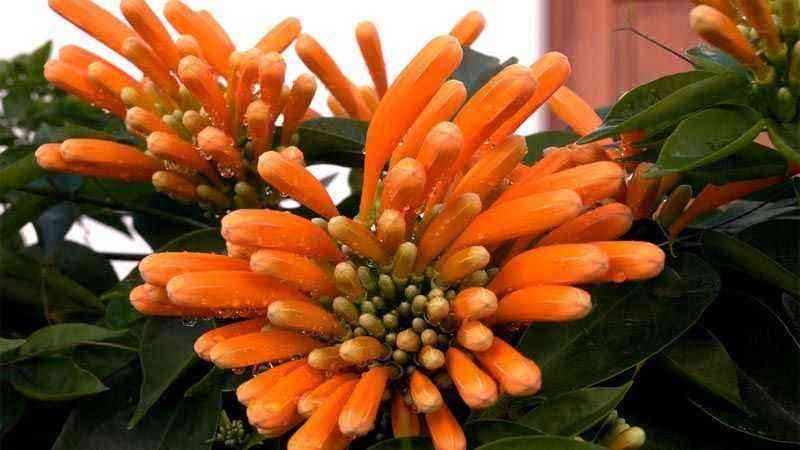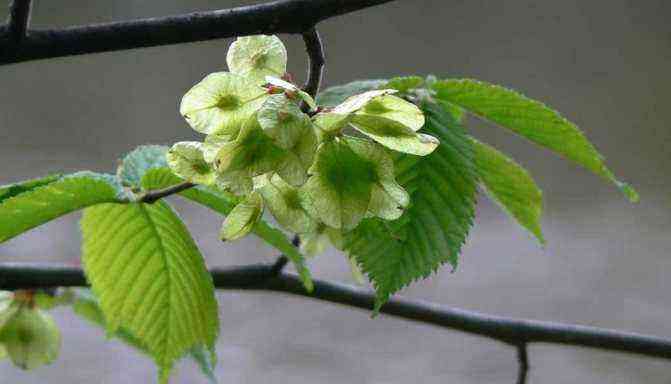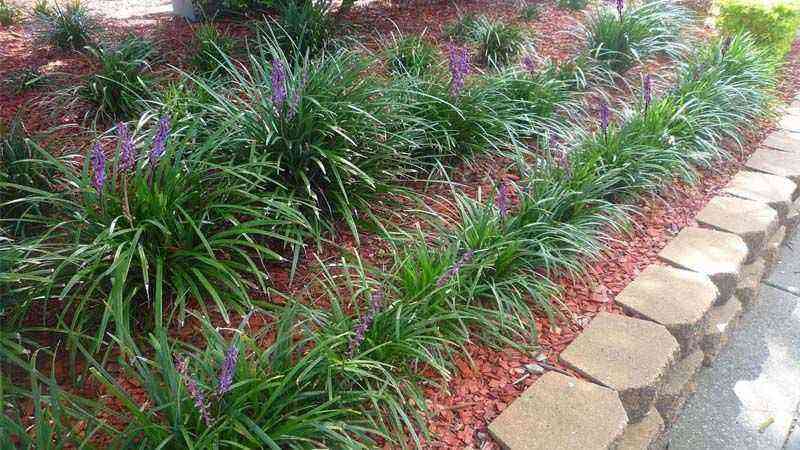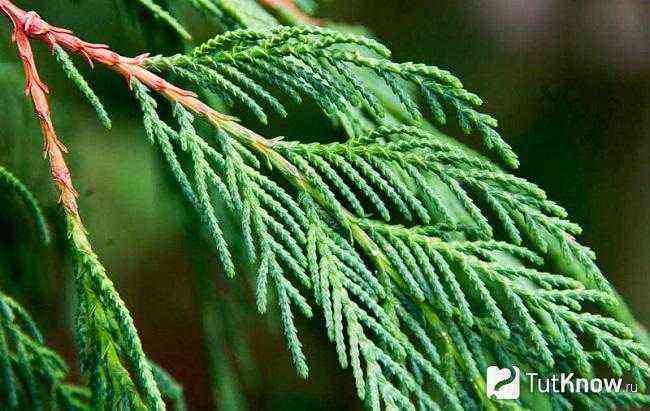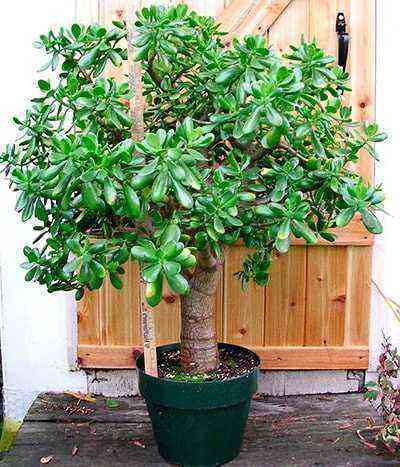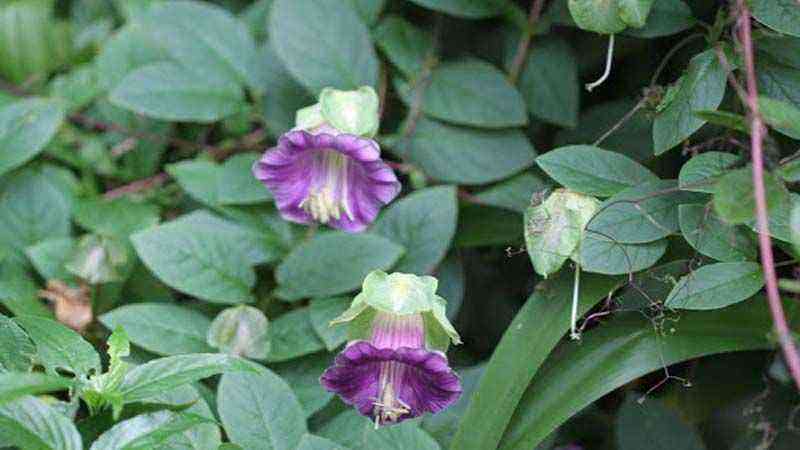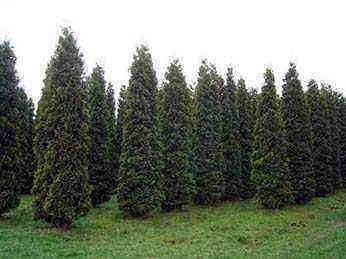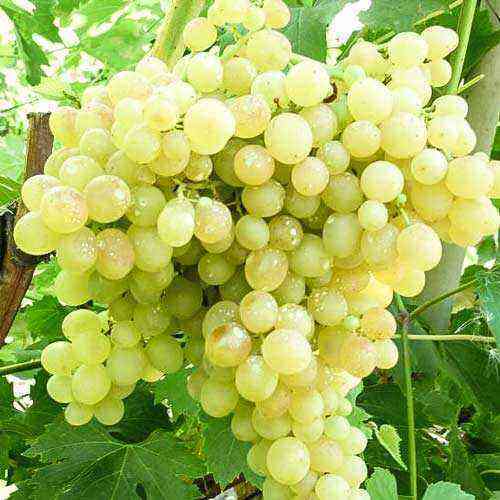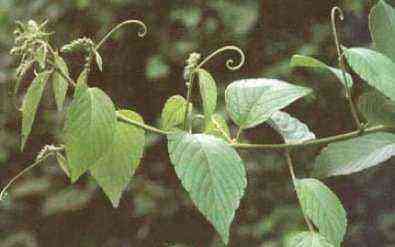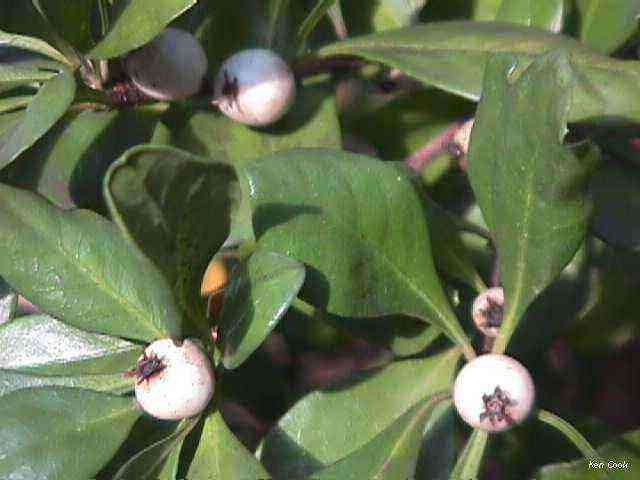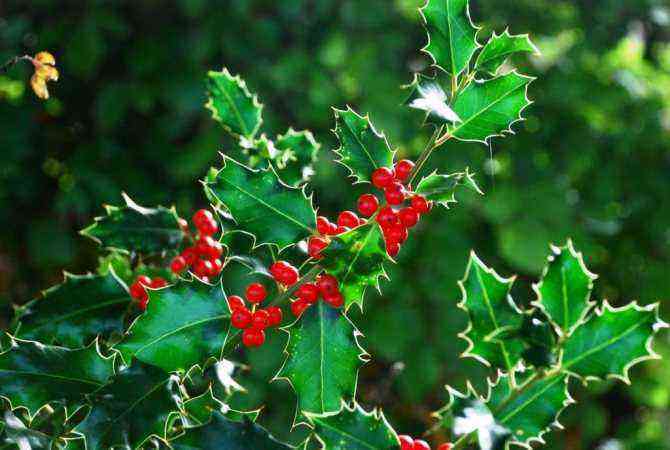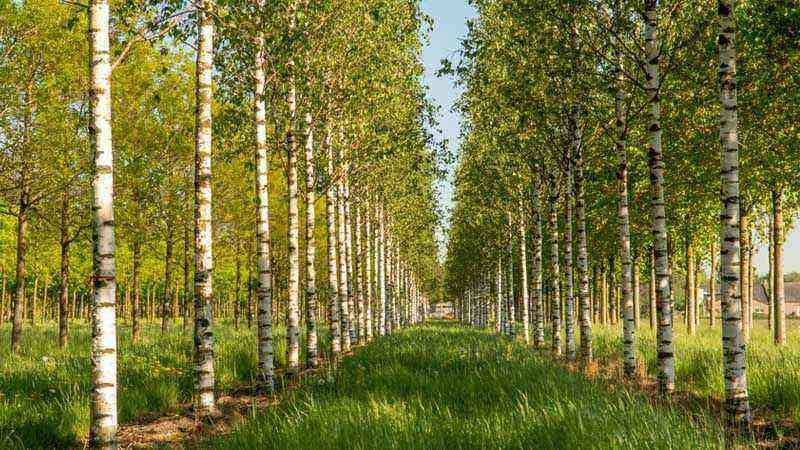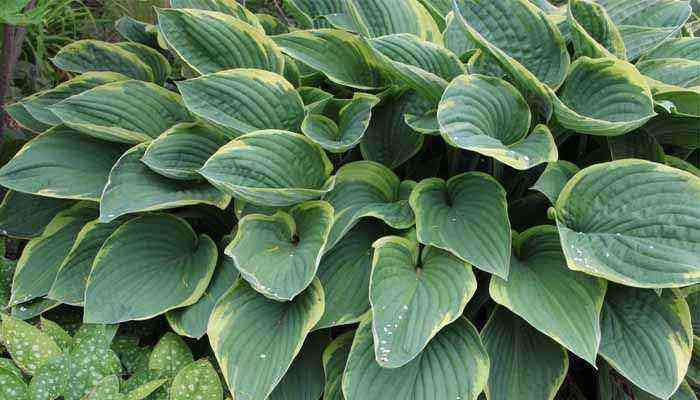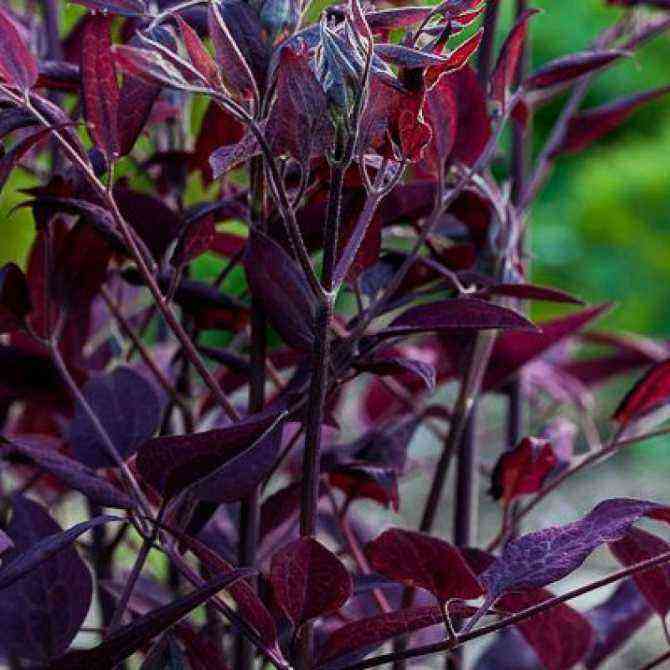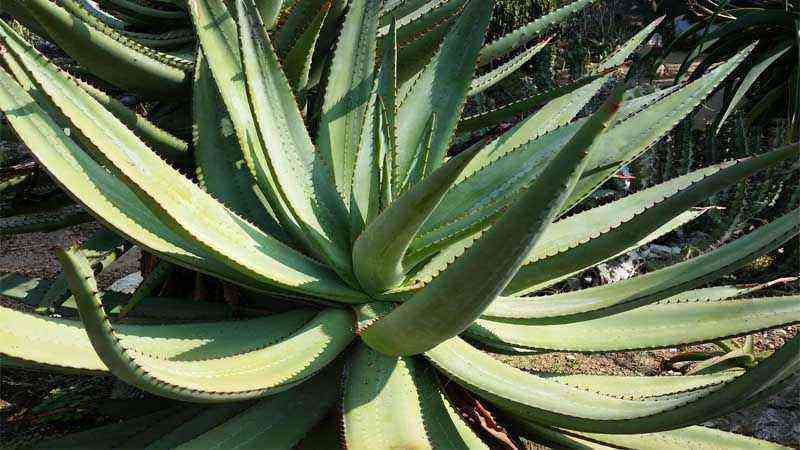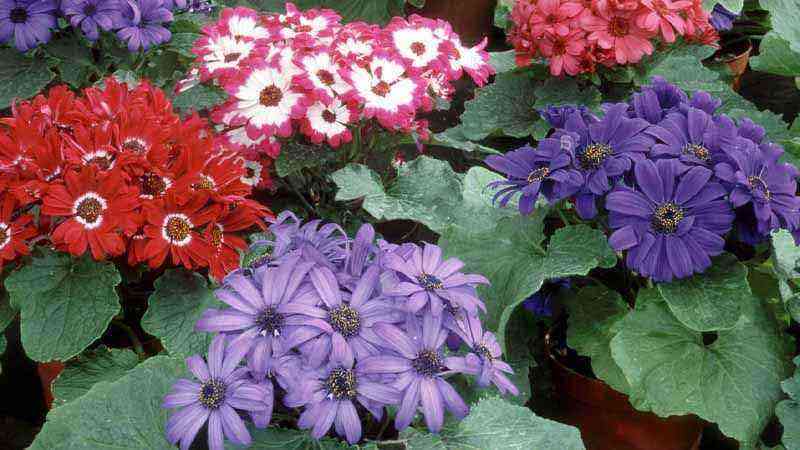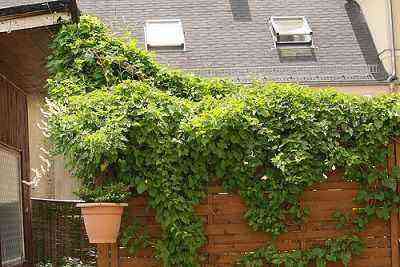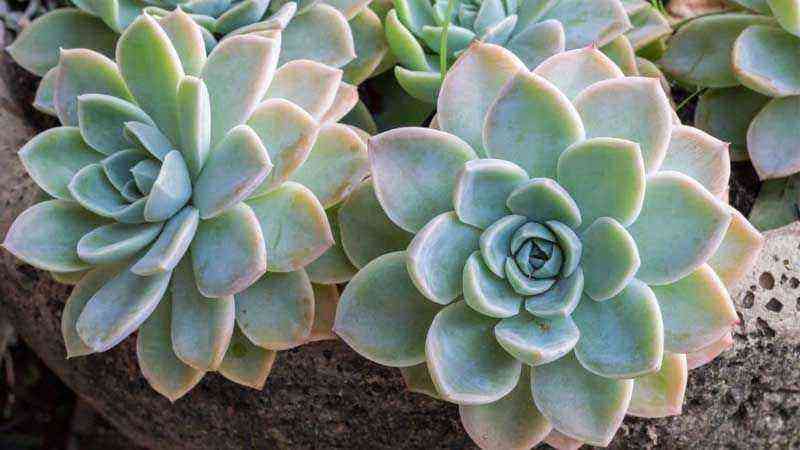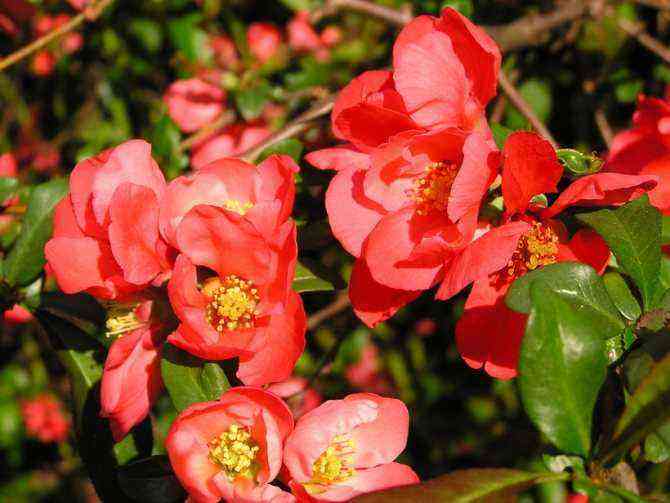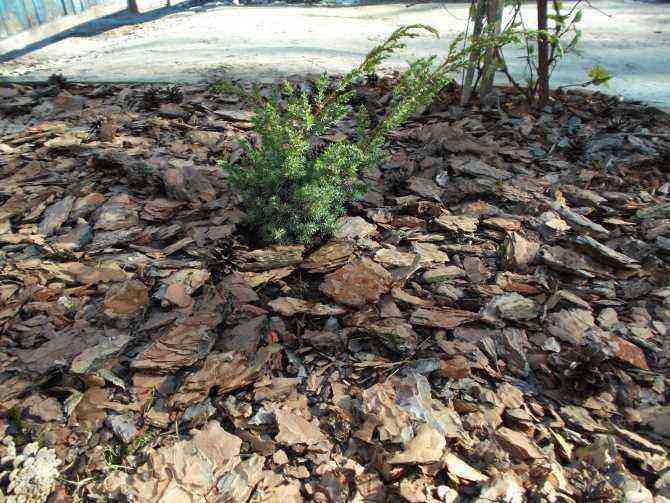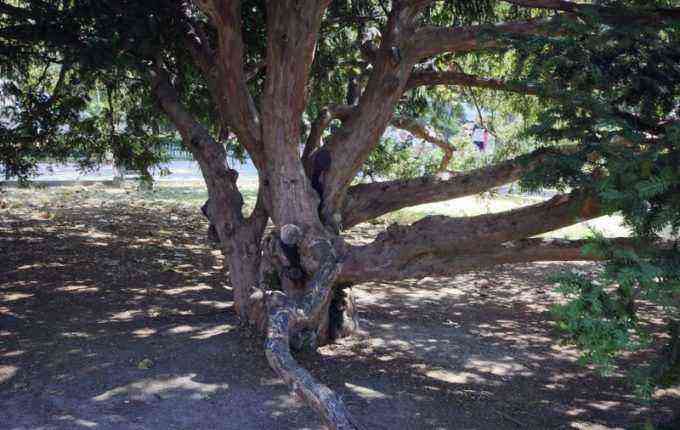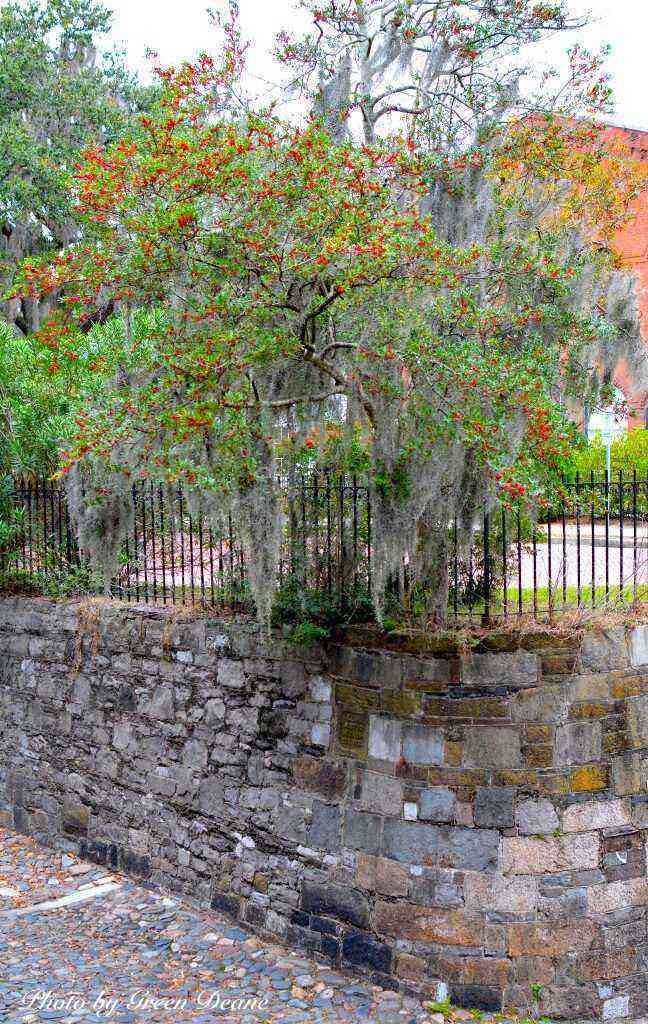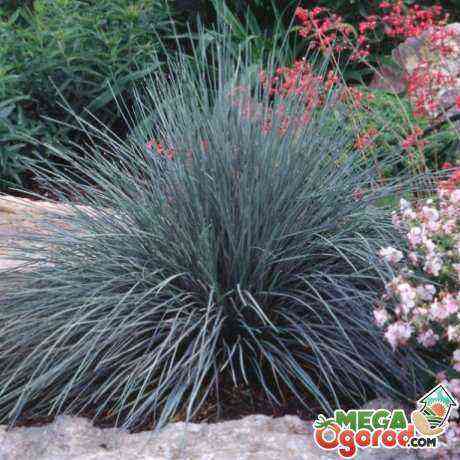Ornamental shrubs play a significant role in the landscape design of the garden. Sometimes they form “skeletal landings”, which become the central axis of the composition. In some cases, they are used as a bright accent against the backdrop of garden plantings. They are used to create a hedge or geometric shapes are cut out of them. Today it is already impossible to imagine the modern design of gardens and parks without all the variety of decorative deciduous and flowering shrubs.
Shrubs are the link between trees and herbaceous plants
Variety of assortment: what to choose for decorating a personal plot?
There are a great many varieties and varieties of shrubs that are used in landscape design. Gardening shops offer a wide range of similar products. In order for the purchase to be successful and delightful for many years, you must first decide on its purpose.
Shrubs can be used to decorate various areas in the garden
Shrubs in landscaping can serve several different functions:
- Site decoration. This is the main purpose of the plantings. For many years they have been used to decorate the courtyards of private houses, parks, areas near city buildings.
- Arrangement of a recreation area. An excellent option for creating a comfortable and cool gazebo is to plant the perimeter with evergreen thuja or juniper. Then such plantings will bring health benefits. After all, cypress trees are famous for their antiseptic and antibacterial properties.
- Replacing trees. Trees take up a lot of space. They have a spreading crown and deep roots. They create shading and prevent the development of other “green inhabitants” of the infield. Shrubs do not have such negative qualities. Low and medium-sized species allow you to create beautiful landscape compositions without harming the rest of the flora on the site.
- Fencing. Ornamental shrubs are often used as hedges. They do an excellent job of demarcating land boundaries. They are cut and often shaped into geometric or fancy shapes.
- The connecting link in the layout. In multi-component landscaping schemes, shrubs can connect together garden elements. They are often planted between trees. At the same time, they help to form an organic garden composition.
- Bright accent. There are many decorative and flowering varieties that, with their lush inflorescences, will revive the monotonous construction of the garden landscape.
Shrubs look good at the forks and curves of garden paths
But, of course, the main purpose of shrubs in landscape design is to decorate the garden.
Choosing colors for landscape decoration
Flowers are another attribute of the decor of the infield, which cannot be ignored. A yard without flowers seems lifeless, empty and dull. But flowers, bright and colorful, replacing each other throughout the season – this is a link between shrubs and trees. Flowers can be used to decorate alpine slides and parterres, arranging flower beds and borders. For landscape design, you can use various types of flowers: wild and ampelous, low and tall, one and perennial, light-loving and shade-tolerant, with decorative foliage and so on.
What to consider when choosing ornamental shrubs?
When buying ornamental shrubs, it is important to remember that each of them has its own characteristics. Care for each of the varieties is different – there are capricious and unpretentious crops. So, if you decide to give your garden artistic content, then you need to consider the following nuances.
Function… First of all, you need to decide what ornamental trees or bushes are bought for. For zoning the site, some varieties are selected, and for decorating a pergola or gazebo, others.
Shrubs planted on the border of the site will protect from drafts and prying eyes
Compatibility with other cultures… If there are already trees on the site, then it is more advisable to use medium-sized shrubs. They will harmoniously fit into the overall picture.
Dimensions… When deciding on a choice, do not forget to inquire to what size the plant grows in height and width. Some varieties can even exceed the height of the trees. There are also antipodes to giants – dwarf and medium-sized varieties. They are marked with the nana label. It is better to plant them in groups so that they do not get lost in the space of the land plot.
For a small garden, compact varieties with unusual foliage are suitable, for example, the Thunberg barberry
Direction of growth… When choosing a variety, it must be borne in mind that, depending on the direction of growth, ornamental shrubs are divided into three large groups:
- Vertical. They look like trees, grow upwards. They have well-defined trunks and a high crown. An example is the hawthorn.
- Horizontal. The width of the crown is much greater than the height of the trunk. The location is horizontal in relation to the ground. Sometimes they form an almost even parallel with the soil, such as, for example, a horizontal juniper.
- Spherical. This class includes all varieties with a rounded crown, such as lilac or viburnum.
Kalina will delight in the fall with red berries that will remain in the winter if they are not collected for jam
In landscape design, varieties with different growth directions are used in order to play up the space of the personal plot and create real artistic masterpieces.
Rose bushes are a great way to dilute the monotony of a grass lawn
Varieties of trees
To decorate the landscape design of a private house, you can use various types of trees, the main thing is that they are suitable for the site in color, growing conditions, height and sensitivity to light. Deciduous trees are the main decoration for the site, which must be selected according to the following criteria:
- Crown shape.
- Size, color and shape of the leaves.
- The nature of the flowering.
- Attractive fruit appearance.
- Duration and period of blooming.
When forming landscape design and decorating a personal plot, fruit trees are actively used, including the well-known plum and apple tree, cherry and pear, apricot and cherry. Thanks to their planting, you can not only enjoy the beauty of the site, but also enjoy the delicious fruits that both children and adults adore. However, when decorating a site, you cannot do without conifers, since they complement fruit and deciduous trees, transforming the garden and creating a special atmosphere.
Nuances to pay attention to when choosing conifers:
- Color palette.
- The shape and size of the tree.
- The color and texture of the bark.
- Smell. Some trees produce essential oils, which will give them a wonderful scent during the summer.
- The presence of cones.
Trees and shrubs in garden landscaping
Shrubs can be planted as separate islands. But groups that use diverse bushes and trees look much more interesting. Mini-groups look especially impressive.
Mixed garden composition of coniferous and deciduous shrubs
What is their feature:
- Compactness. A small amount of area is involved. No more than 2-4 types of crops are used.
- The vertical structure of the garden. Such landings form a vertical, around which the further construction of the composition is carried out.
- Background for other plant ensembles. Mini plantings will be an excellent background for the rest of the plantings and compositions.
Any garden composition should look good from different points of the site.
How to arrange trees and shrubs in the garden?
Selecting and arranging plants in complex plantings is not as easy as it seems at first glance. To do this, you need to take into account several factors:
- The sizes of the planting material.
- The massiveness of the crown and overall dimensions.
- The silhouette that a particular garden culture forms.
- The visual effect that a single planting or group of plantings will have.
Spectacular company – shrubs with different colors of foliage and flowering plants
Rules for drawing up landscape compositions in which trees and shrubs participate:
- Choose species that differ in growth shape. Trees blend well with squat shrubs. A successful tandem is an ornamental cherry with one of the representatives of cypress or rhododendrons.
- Create contrast in colors. Against the background of the dark green foliage, which is wrapped around the trees, you need to make a few strokes of a bright or variegated color. Varieties of bushes with speckled, speckled, spotted or striped leaves will help in this.
- Combine a dense and openwork crown in a duet. So massive and dense spruce branches will be wonderfully combined with small-leaved trees.
- Arrange trees and bushes in rows. You cannot plant all planting elements in one line. It is advisable to arrange them in several rows. It is important to take into account that the first row should not overlap the crown of the next one by more than 30%.
Be sure to plant conifers that won’t make your garden look dull in winter.
Tall crops
Planting tall trees is important for large areas. With the help of such cultures, beautiful shaded corners are formed. The most popular are:
Chestnut
There are also decorative fruit trees, the most popular:
- Plum Hungarian Korneevskaya;
- Plum Hesei;
- Apple tree Spartan.

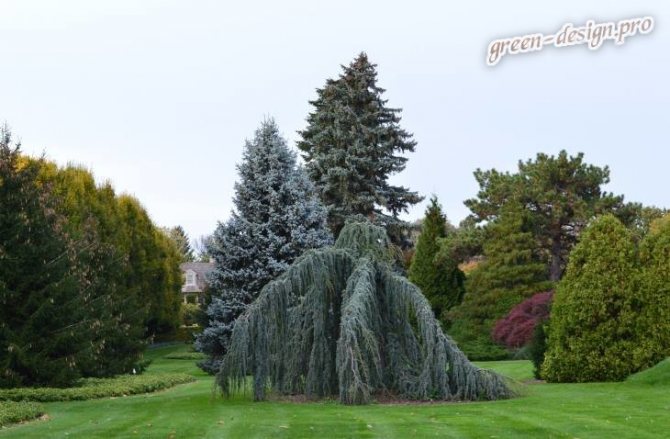
Provided crops are properly cared for, they will beautify your garden for years to come.
Interesting articles
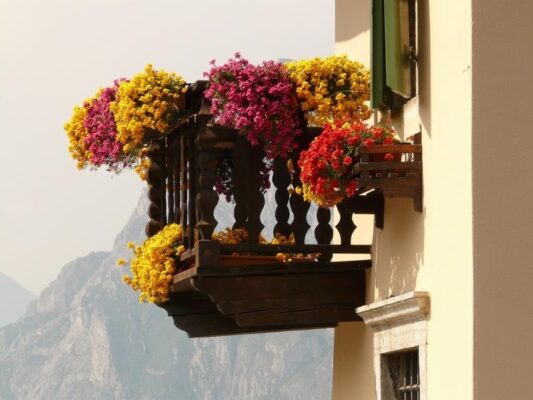

Balcony garden
We create original balcony flower boxes


Rock gardens and rockeries
Retaining wall made of stone as an element of landscape design
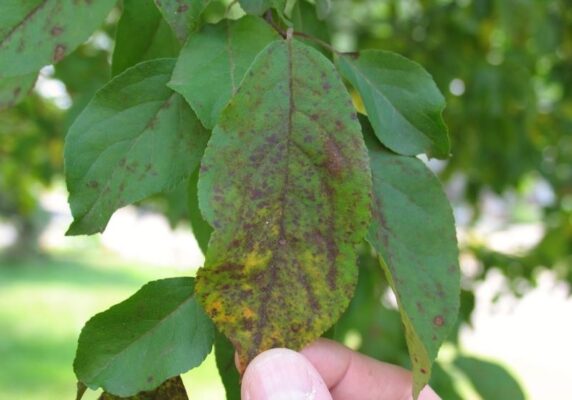

Care of the garden
What pests and diseases are found on fruit trees and how to deal with them

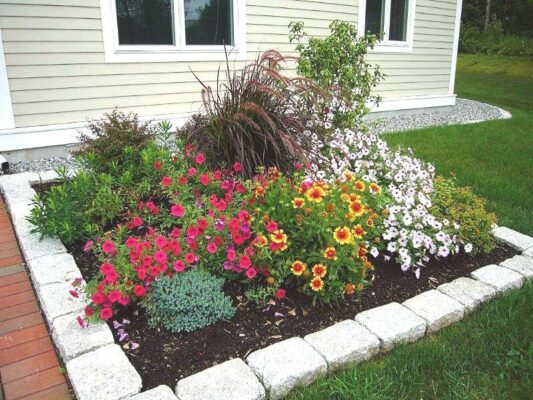
Site arrangement
Features of creating a flower bed of continuous flowering


Site arrangement
Laying a rolled lawn: is it worth it to do it yourself or entrust it to professionals
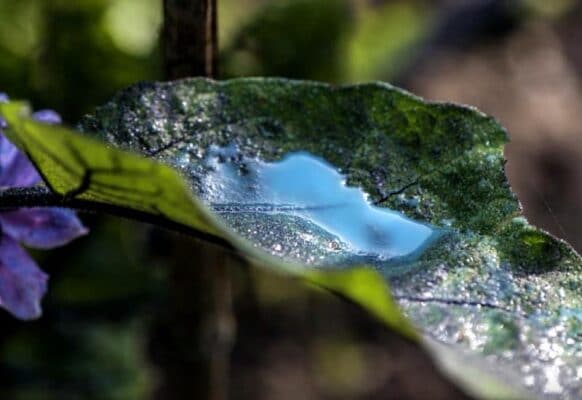

Care of the garden
Trees and shrubs in garden design are the best “candidates” for landscape compositions
Ideal options for creating complex plantings in the garden are hydrangea and rhododendron. In landscape design, such a combination is considered classic and the most successful. Firstly, both have two indisputable advantages – a dense crown of leaves and lush inflorescences. Secondly, they bloom, replacing each other and providing beautiful flower caps for almost the entire warm season. They can be supplemented in the foreground with other “neighbors”: kerria, weigela, spirea, action. Then planting from spring to autumn will delight you with a riot of colors and incredible beauty.
Hydrangea blooms with large dense spherical or cone-shaped inflorescences
Azalea and rhododendrons in front of the main entrance of a private house
The original arrangement of trees and shrubs in the garden
The garden will become much more original if you choose an unusual design style for it. You can try landscaping in a regular style.
Geometrically correct shapes are the main difference between a garden in a regular style.
Its main features:
- Geometric shapes. Landings are arranged according to strict geometric rules.
- Smooth crown. The foliage and branches are trimmed to achieve a perfectly flat surface.
- Cultivars suitable for shearing. Varieties are selected that are easily amenable to topiary design: western thuja, small-leaved linden, irga, hawthorn, common juniper, berry yew, boxwood, privet. Only then can the rectangular, square and spherical silhouettes that regular gardens are famous for.
Regular style loves order in everything, the paths should be straight, and the flower beds should be symmetrical
If the severity of the forms is not to your liking, then there is another unusual option – a landscape garden. Straight lines and clear geometry are alien to him. It imitates the nature of the wild corners of the forest.
Landscape style is as simple and natural as in the wild
Its distinctive features:
- Naturalness and light negligence. The garden should vaguely resemble a forest edge.
- A combination of different types of plants – coniferous and deciduous.
- Lack of exactly trimmed crowns. They resemble natural outlines as much as possible.
- Diverse combinations of coniferous and shrub varieties. In one planting, spruce, juniper and thuja are remarkably combined with hawthorn, snowberry and bubblegum.
The dark green needles of the juniper successfully highlight the light foliage of the barberry
Popular decorative deciduous shrubs and the art of topiary cutting
Some shrubs have been endowed by nature with foliage of incredible beauty. They are valued among gardeners no less than the flowering varieties. Their foliage is striking in a variety of shapes and colors. At a great price, landscape designers have such decorative and deciduous varieties as:
- Japanese maple;
- aralia;
- barberry;
- bladderworm;
- stefanandra.
Japanese maple with an unusual crown of red shade will make the garden unusually picturesque during the entire warm period.
In addition, many specimens from this group are used to form hedges. Privet, European euonymus, caragana, white dogwood, Tatar honeysuckle, silver goose – all of them are also great for zoning a site.
Privet is great for hedges
All varieties that are suitable for hedges are wonderful material for topiary or curly haircuts. To create garden figurines from the crown, coniferous species are also used – juniper, western thuja. Intricate spirals, triangles, balls can be cut out of them. Or create silhouettes of birds and animals. But for this you need a special frame, which is overgrown with branches. Then the desired shape is cut along the contour of the frame.
Bladder bushes easily tolerate a haircut
Flowering shrubs in your garden: photos, varieties, application
Flowering varieties are a double bonus for the grower. They not only delight with their decorative foliage, but also fascinate with the caps of inflorescences.
Ideal place for planting rhododendrons – partial shade under large, old trees
The most popular flowering species:
- Rhododendron. It is considered the most beautiful, but also the most demanding and difficult to care for. But if you learn the rules of care, then it will become the central decoration of the garden. Inflorescences can be of different shades – from white and pink to purple and lilac.
- Hydrangea. In gardening, the tree hydrangea is most valued – not too picky to care for, but very beautiful during flowering. Shades of globular inflorescences are very different. From white and beige to lilac and blue. Moreover, the color often depends on the composition of the soil.
- Spirea. Unpretentious, hardy, generously decorated with flowering branches. There are varieties that bloom in spring or summer. The color of the inflorescences is from snow-white to bright pink.
- Jasmine. It can impress not only with snow-white flowers, but also with a pleasant aroma. If you choose the right variety depending on the climate of the region, then there should be no special problems during cultivation.
Jasmine is quite undemanding to the planting site and will grow both in the sun and in shade
The following “garden dwellers” can be ranked as no less luxurious blooming assortment:
- fieldfare mountain ash;
- hawthorn;
- lilac;
- forsythia;
- rose hips;
- viburnum;
- чубушник;
- park roses;
- buddleya.
Forsythia bushes planted along a metal fence
Shrubs with decorative flowers
To decorate the garden beautifully, you should get acquainted with the popular and original garden plants that make the landscape unique and beautiful. We will advise which flowering and non-flowering ornamental shrubs to choose for specific conditions. Below are the most popular flowering perennials, photos and names, requirements for soil, cultivation.
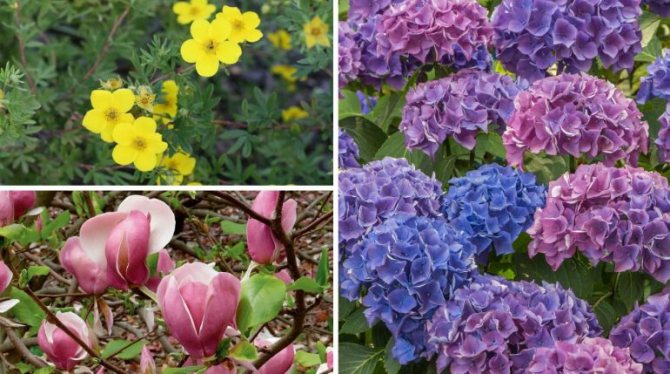

Three-lobed almond
Almonds are quite tall, the height of the shrub reaches about 2 m. The grafted form on the trunk is often sold. The shrub blooms in spring – the shoots are densely covered with attractive, pale pink flowers. Almonds look great in composition, planted with other plants in the garden.
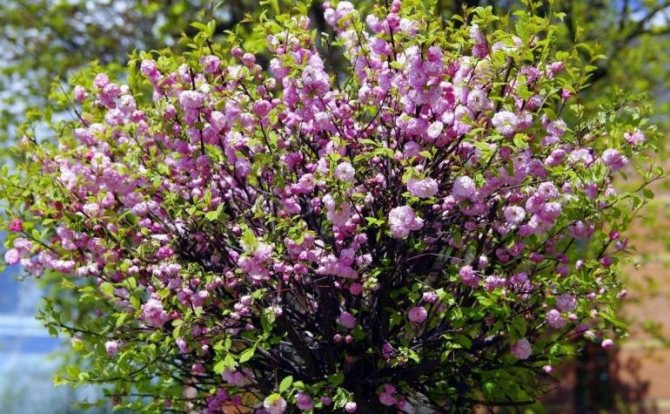
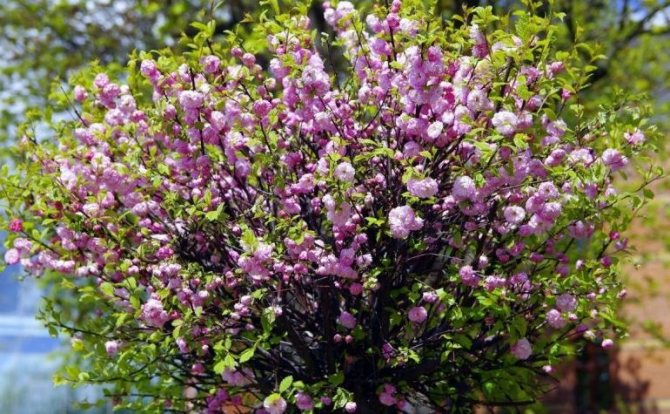
Forsythia
The decorative yellow flowers of forsythia develop before the leaves appear. This is one of the symbols of spring. The bush reaches a height of 2-3 meters. There are many varieties of forsythia available commercially, differing in, for example, growth rates. The plant needs light, fertile soil.
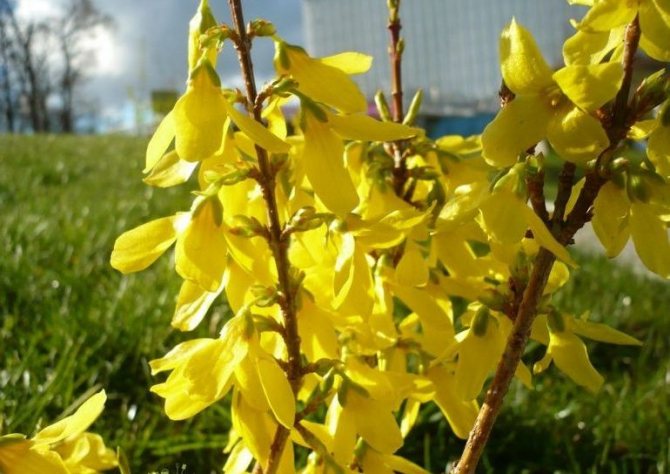
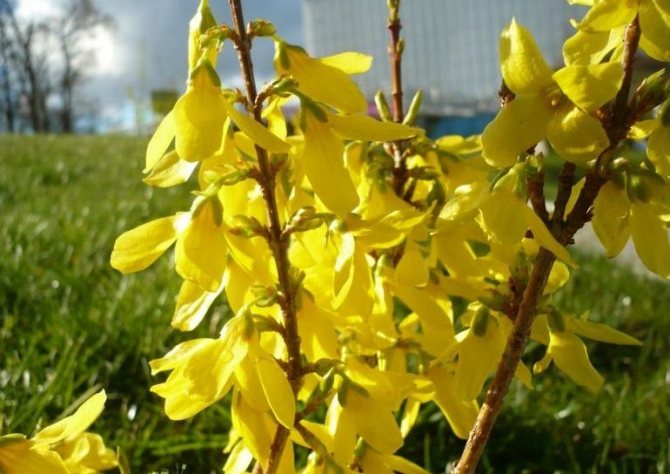
The action is rough
The bush blooms from June to July, grows up to 2 meters. The action is planted in the garden separately or in groups. Requires regular soil moisture – otherwise the plant may dry out during a drought. The best position is slightly shaded.
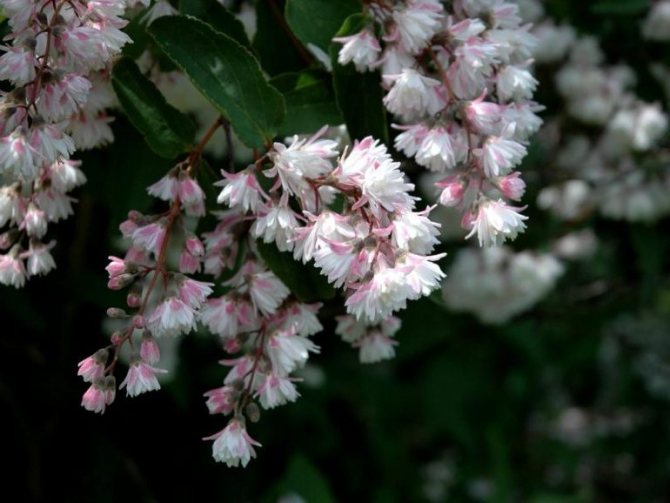
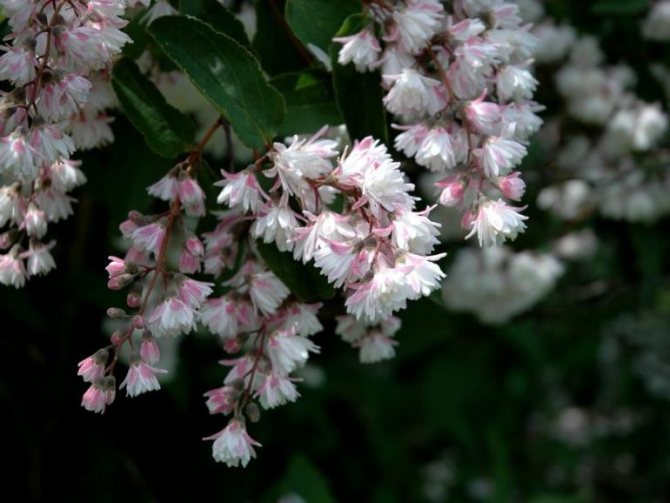
Shrub five-leafed leaf
The deciduous shrub cents blooms for a long time – from mid-May to October. The varieties differ mainly in the color of the flowers:
- white;
- yellow;
- Orange;
- pink;
- red.
The plant reaches a meter height. Requires a well-lit, sunny position and light, permeable soil. The cinquefoil is planted separately or in groups, suitable for decorating the boundaries of plots, creating low hedges.


Chubushnik
It grows to a height of 2-3 meters, has long hanging shoots. Fragrant flowers appear in May. The plant is not demanding on the soil, unpretentious to moisture, but with prolonged drought, the leaves wither. Chubushnik is planted separately or in groups.
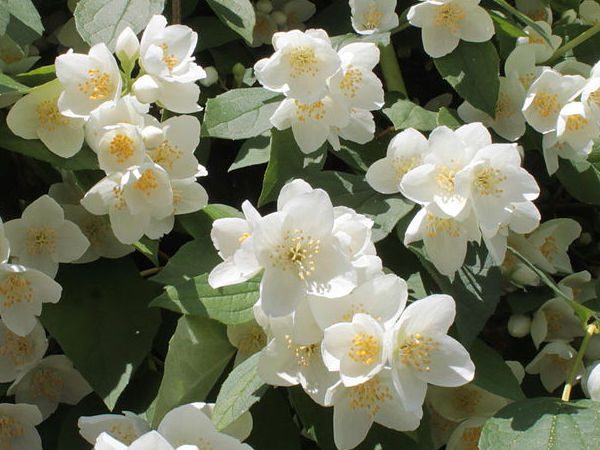
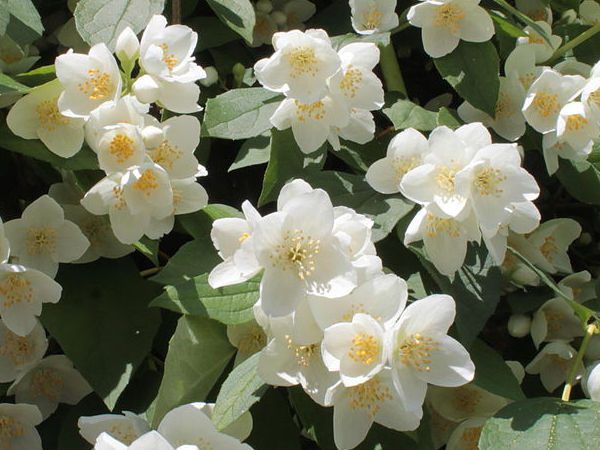
Budleya David
Sprawling, vigorous shrub 2-3 meters high. It blooms from June to October with small flowers on characteristic long panicle-shaped inflorescences of various colors:
- white;
- purple;
- blue;
- pink;
- purple.
Soil requirements: humus, fertile, moist, like loamy sandy soil with a neutral reaction. Illumination requirements – solar exposure. Budleia are planted individually and in a group. In hot weather, during a period of drought, it fades quickly, so it needs to be watered abundantly. It has high requirements for fertilization, 2-3 times during the growing season it is necessary to feed the bush with multicomponent compositions. Not resistant to frost. For the winter, you need to cover the bush with a mound of earth, bark, sawdust, leaves.
Dangling varieties are “Ille de France” and “Pink Delight”.
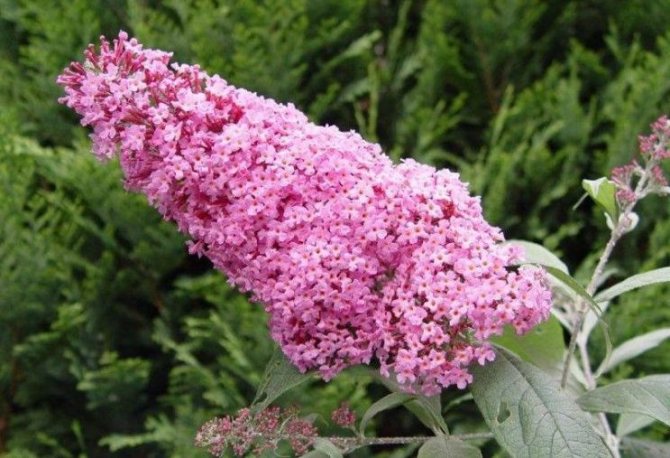
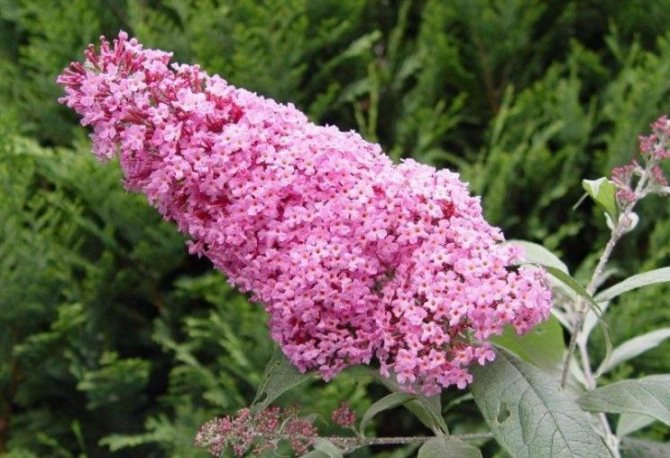
Shrub peony
The tree-like peony Paeonia suffruticosa is a dense, hemispherical shrub that grows up to 1,5 meters in height. It is a close relative of the popular peony. The tree branches are covered with leaves and of wonderful beauty, giant purple, dark pink flowers. The peony is planted in small groups or independently.
Shrub peony does not like transplanting. Prefers warmth, silence and sun. Fertile, humus-rich soils are preferred. Dislikes sour soil.
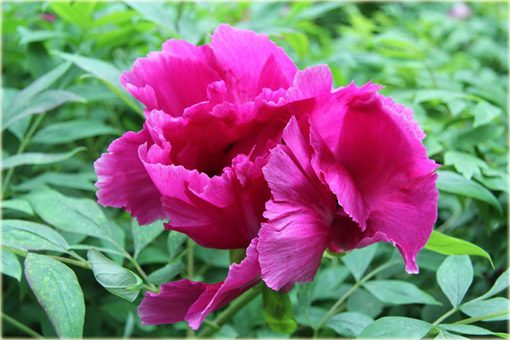

Rhododendron
An ornamental shrub grows up to 1-2 meters, picky about the acidity of the soil. Every year, the bush needs to be fertilized with special fertilizers for plants that prefer acidic soils. Blooms in May, June. Frost protection of the kidneys is required. During flowering, faded flowers should be removed regularly. Plants are susceptible to various diseases caused by fungi that cause the death of whole shoots. It is necessary to cut off the affected parts of the bushes after the first symptoms of the lesion are noticed.

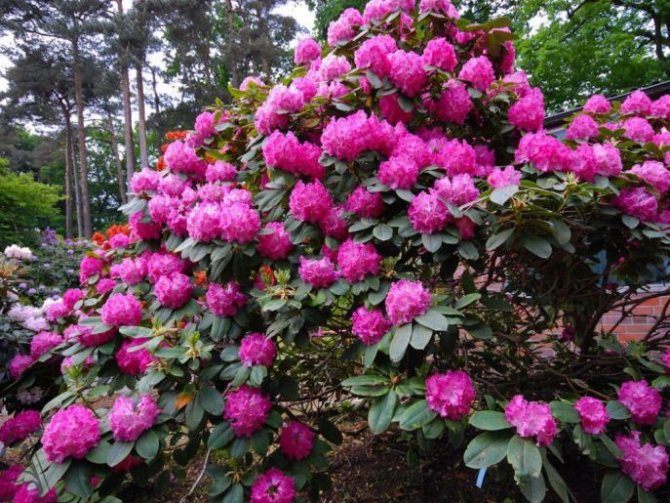
Broom
Deciduous shrub with a height of 1,5-2,0 meters. Blooms profusely in May-June with beautiful small yellow flowers. The bush is recommended for the creation of landscape plantings, reclamation of acidified soils, stabilization of slopes, dunes. Green shoots often dry out in winter, but even a short decorative period is worth considering. It is undemanding to its habitat, but does not tolerate limestone soils and salinity.
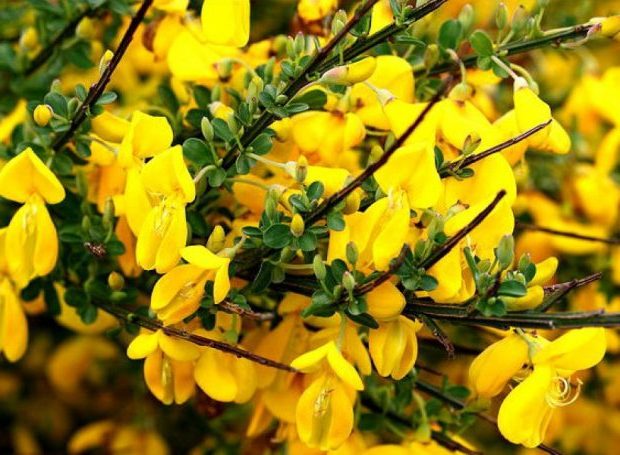
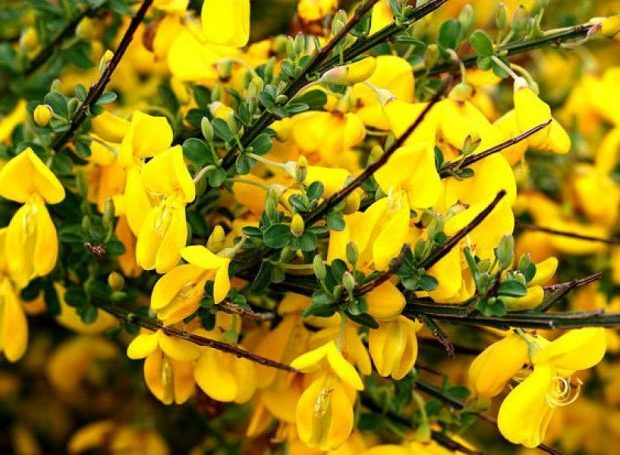
Tree-like shrub hydrangea
Deciduous shrub with poisonous, decorative flowers 1-2 meters high. Flowering – July-September with spectacular very large inflorescences of various colors:
- white;
- red;
- purple;
- blue;
- pink.
The branches sometimes bend under the weight of the inflorescences. Demanding on soils, the soil needs slightly acidic. The place is chosen sunny, protected from the wind. Can freeze in harsh, frosty winters. It is planted on its own, looks beautiful against the background of a dark green landscape.
Jasmin
Shrub up to 3 m high. The first flowers appear at the end of September, bloom until the first frost. Jasmine begins to bloom again in January, blooms until the end of April, intermittently during frost. In severe frost, flowers may fall off. Intense yellow flowers grow singly on thin, leafless shoots. The shrub often twists, it is necessary to tie the stalks on a support. Sunny or slightly shaded exposures are preferred, wind protection is required. In warm regions, it blooms profusely, there is no danger of freezing flower buds.
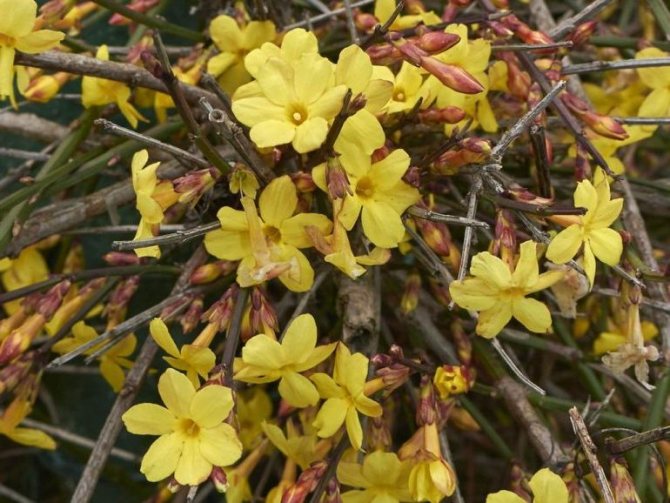
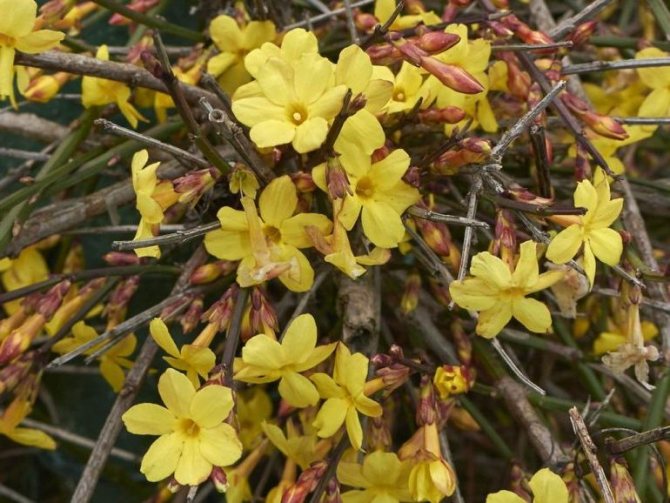
Japanese viburnum
The shrub usually reaches a height of 1,5-2 meters and belongs to the Musket family (Adoxaceae). In its natural state, it grows in China, Taiwan, Japan. It is characterized by dark green leaves (yellow, red in autumn) with jagged edges. The flowers are white, collected in large, flattened inflorescences. Kalina blooms twice – in May and August. In autumn, produces red fruits that change color as they ripen. It is characterized by weak frost resistance and is planted in a sunny, warm place protected from the wind. In winter, the viburnum is covered with agrotextile, the ground near the trunk is mulched.
The optimal soil is fertile, humic, slightly moist with a slightly acidic reaction. With prolonged drought, the plant needs watering, does not tolerate a lack of water. The shrub should be fertilized with organic fertilizers: compost, humus. Does not require pruning, except for sanitary.
Viburnum is used for unformed hedges, combining with other shrubs. The bush looks good in a conspicuous place.

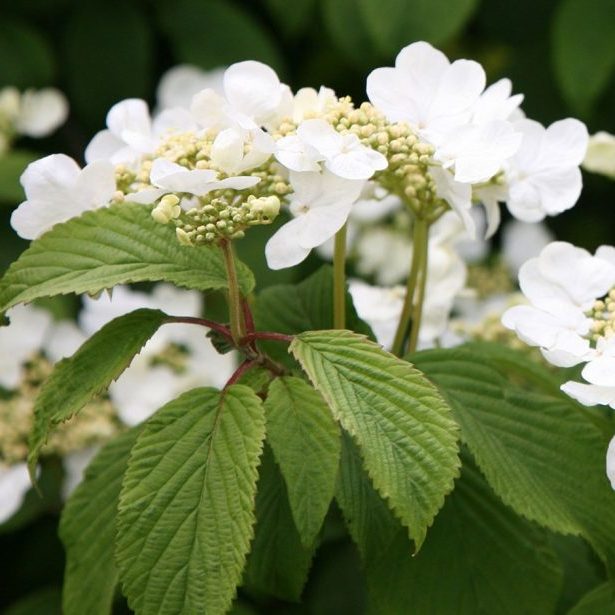
How to plant and care for plants correctly?
When planting, it is important to follow a few rules:
- It is advisable to plant a seedling in the fall.
- The hole for the bush is spacious, the roots should not be cramped when planting.
- The bottom of the pit is slightly loosened, a little compost is poured and fertilizer with a prolonged action is added.
- A peg is located in the center of the pit, to which the seedling is tied after planting.
- The roots of the layering must be straightened and spread out along the bottom of the fossa.
- The soil must be carefully trampled down during planting.
- A round groove is made around the seedling so that the water does not spread.
- After planting, the bush is watered abundantly.
When planting, it is important to take into account the subsequent growth of the shrub and its adult dimensions, so that later you do not have to transplant the plant to another place.
Further care depends on the variety. But there are some general recommendations: the soil around the branches should be periodically loosened and watered. Shoots are pruned from time to time and old branches are removed. Faded inflorescences are cut off so that the bush does not lose its decorative effect.
Planting and care
When choosing a place for planting a snowberry, there is no need to think about whether it will grow in this particular area. The snowball feels great both in the shade and in the sun. Poor soils, sandy or stony, will not be an obstacle to planting and caring for a snowberry in the open field. However, the shrub will thank the caring gardener with intense flowering and abundant fruiting.
The shrub can be planted in both spring and autumn. The main condition for fast rooting of a plant is good soil moisture. Applying organic fertilizers will help the plant to take root. Having planned the landing site, you need to prepare it. For an autumn planting, it is necessary to dig holes about 60 centimeters deep and the same in diameter in a month, fill them with a mixture of crushed stone and a substrate consisting of humus, river sand and peat. Additionally, for each bush is added:
- superphosphate – 200 grams;
- dolomite flour – 200 grams;
- wood ash – 600 grams.
For planting in the spring, all work must be done in the fall.
If you plan not for a single or group composition, but for planting a snowberry as a hedge, you need to dig a trench 45 centimeters wide and 60 centimeters deep. The planting density is 3-4 plants per 1 running meter.
After planting the plant, the soil around must be tamped, well watered at the rate of 1,5-2 buckets per bush and the trunk circle should be covered with a 5 cm layer of peat. After planting, you need to make sure that the root collar of the seedling is at ground level. Watering the seedlings is necessary for 5-7 days after planting, subject to dry weather.
An unpretentious snowberry will grow, even if you don’t care for it at all. But like any plant, surrounded by care, it will look healthy and well-groomed with just a little work.
Watering a snowberry
In dry summers, the shrub needs watering, which is best done in the evening in the amount of 1,5-2 buckets for one plant. The soil in the near-trunk circle must be loosened and weeded. If the weather is humid, you don’t need to water the snowberry. In autumn, the ground around the plant must be dug up.
Necessary feeding
A snowberry can do just fine without feeding. But how will it bloom and bear fruit if you feed it with organic fertilizer! Only 2 times. In the spring, take 5-6 kg of humus and add 100 grams of potassium salt and superphosphate, add under the plant. Then in the summer, when the fruits begin to set, you need to use any fertilizer for berry crops.
Pruning and shaping the crown
In the spring, it is necessary to conduct a control examination of the plant and identify the branches that have dried up and damaged during the winter. Cut off such shoots completely. There is no need to be afraid to prune healthy branches as well, as the plant lays flower buds in new shoots. You need to shorten healthy branches by half the length. Slices should be processed with garden pitch if their thickness is more than 5 mm. Young strong shoots will be grateful to the bush for the procedure.
Winter period
When choosing a variety of snowberries, you need to pay attention to the frost resistance of the plant. If the variety is cold-resistant, then the shrub does not need additional shelter and will withstand frosts down to -35 ° C. In regions with harsh winters, even a frost-resistant variety of snowberry must be hilled high and covered with spruce branches and dry leaves.
When the question arises of what to plant in a summer cottage or a personal plot, the choice in favor of a snowberry is obvious. For experienced and novice gardeners, an important factor is the unpretentiousness of the plant and its unconditional decorative effect. This will allow you to realize your design abilities for landscape gardening of the site, without spending a lot of time and effort.
How to plant and grow such a bush? Is it difficult to care for?
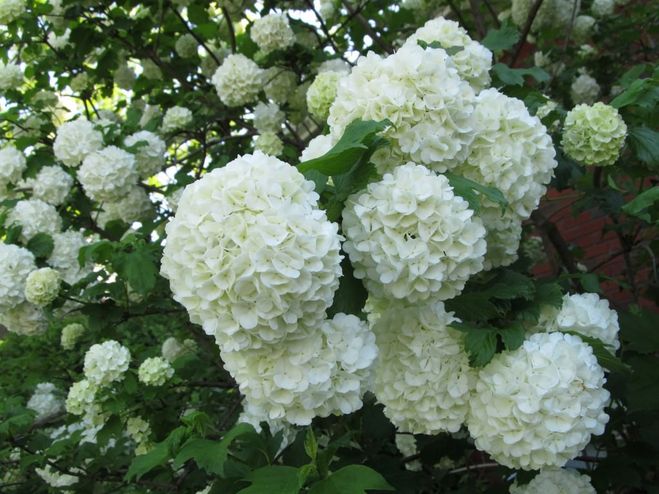
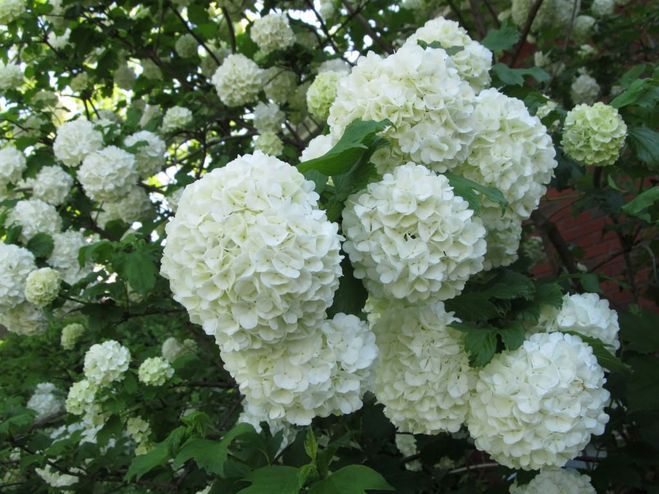
This is viburnum bulldog, artificially bred in France by breeder Lemoine. She is the closest relative of the common viburnum, but unlike her, it has no fruit. “Buldenezh” is translated from French as “a ball of snow”. At the beginning of flowering, the inflorescence balls have a pale greenish color, then their shade changes to cream. The white color appears after the flowers have fully opened. Snow-white balls reach a diameter of 20 cm, so the branches under their weight can lean low to the ground. This makes the bush even more spectacular. The bush itself can reach a height of up to 350 cm.
The flowers of the buldenezh are sterile, do not give seeds, therefore, its reproduction is possible only by layering, green cuttings and dividing the bush.
